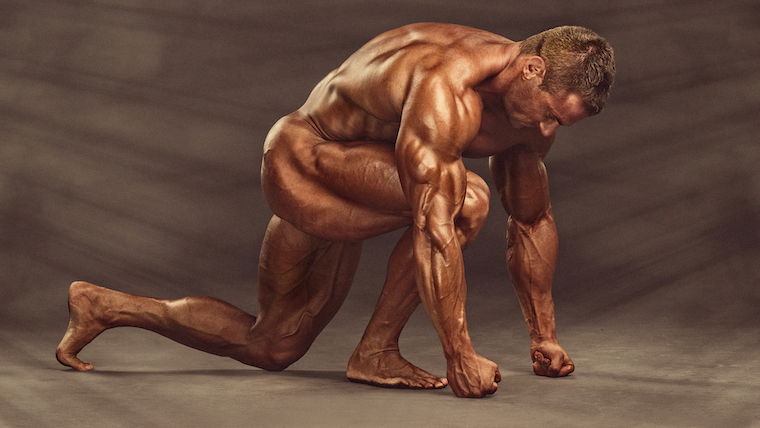Why do bodybuilders pose? No, really – why bother? Why can’t judges at a bodybuilding contest just look at each competitor’s measurements, body fat, muscle separation, vascularity, and conditioning and call it a day — whoever is the biggest and leanest wins!
But no — bodybuilders pose. They flex and strut. Whether the result is epic or cringe, to be a bodybuilder means presenting one’s physique, not just building one’s body.
Two bodybuilders who lift could have identical physiques, but one poses, and the other who doesn’t looks, well, less engaging. What gives? If both athletes have the same measurements and put in identical work in the gym and with their diets, then why is the one posing more interesting? The difference lies between appearance and aesthetics.
Editor’s note: This article is an op-ed. The views expressed herein are the author’s and don’t necessarily reflect the views of BarBend. Claims, assertions, opinions, and quotes have been sourced exclusively by the author.
https://www.instagram.com/p/ClfwAC-OoXu/
[Related: Clark Bartram and Mike O’Hearn Discuss Brand-Building in the Fitness World]
The word “aesthetic” is often thrown around bodybuilding culture, as in, “You look mad aesthetic.” But that usage can be misleading. Usually, the complement is meant to recognize someone’s appearance, not aesthetics.
“Appearance” is defined as “the state, condition, manner, or style in which a person or object appears; outward look or aspect.” In other words, appearances are the traits of the body that can be corroborated; they can be weighed and measured. Whether in a contest or just in the gym, two athletes could measure roughly the same and even share similar physique appearances.
So what makes one physique memorable Or aspirational? Or legendary? It is not how the body is built but rather how the body is presented. “Aesthetics” have a pretty heady definition:
“[Aesthetics is] the branch of philosophy dealing with such notions as the beautiful, the ugly, the sublime, the comic, etc., as applicable to the fine arts, with a view to establishing the meaning and validity of critical judgments concerning works of art, and the principles underlying or justifying such judgments.”
That’s a lot! Simply put, aesthetics are not just “how something looks” but how people react. Aesthetics are the opinion of an appearance.

[Related: Why Do Bodybuilders Use Spray Tan for Competitions?]
To understand the difference between appearance and aesthetics, look at famous bodybuilders of the past. Arnold Schwarzenegger, during his Mr. Olympia dynasty, would likely get clobbered in the Mr. Olympia competition today. Serge Nubret might not make first call-outs. Steve Reeves wouldn’t unlikely make it past a regional competition. Yet these, and many more, remain the athletes who inspire bodybuilding excellence. How can those physiques, which we can see may not be up to the appearances of today’s best, still be considered aspiration, inspirational, or even heroic?
The difference is that these men thought in terms of aesthetics, not of appearances. They knew that the ways they stood or moved changed the reaction and opinions of others. They knew that the way they looked was just an appearance, but the way they posed created an aesthetic.
https://www.instagram.com/p/Cj26Wy_rtSK/
[Related: The Risks and Rewards of Extreme Leanness on the Road to the Bikini Olympia]
Appearances are a broad back; aesthetics are “a fascinating sweep.” Appearances are large arms; aesthetics are “a diesel set of guns.” Appearances are how much a bodybuilder weighs; aesthetics are “being a mass monster.”
Aesthetics are about triggering opinions. Whether cringy or inspiring, envious or admiring, the ability to trigger the emotional response makes a physique more valuable than just the sum of its measurements. This is why bodybuilders pose.
Appearances are for gym goers. Aesthetics make a bodybuilder.
Featured image: @goldenerathletics on Instagram